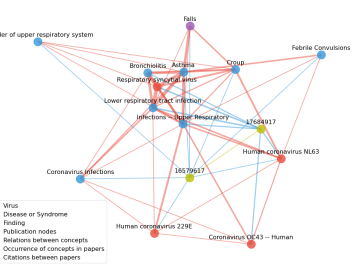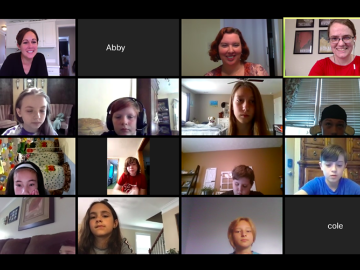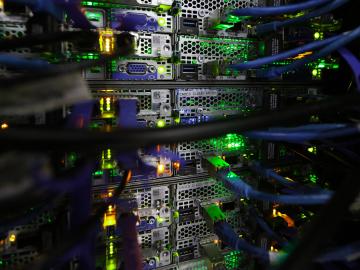
Filter News
Area of Research
- (-) Supercomputing (56)
- Advanced Manufacturing (6)
- Biological Systems (1)
- Biology and Environment (37)
- Computational Biology (2)
- Computational Engineering (2)
- Computer Science (6)
- Electricity and Smart Grid (3)
- Energy Frontier Research Centers (1)
- Energy Science (76)
- Fuel Cycle Science and Technology (1)
- Functional Materials for Energy (1)
- Fusion and Fission (32)
- Fusion Energy (12)
- Isotope Development and Production (1)
- Isotopes (12)
- Materials (95)
- Materials for Computing (14)
- National Security (28)
- Neutron Science (126)
- Nuclear Science and Technology (42)
- Nuclear Systems Modeling, Simulation and Validation (2)
- Quantum information Science (2)
- Sensors and Controls (1)
News Topics
- (-) Advanced Reactors (1)
- (-) Biomedical (17)
- (-) Grid (5)
- (-) Machine Learning (15)
- (-) Nanotechnology (11)
- (-) Neutron Science (13)
- (-) Nuclear Energy (4)
- (-) Space Exploration (3)
- 3-D Printing/Advanced Manufacturing (5)
- Artificial Intelligence (37)
- Big Data (22)
- Bioenergy (9)
- Biology (11)
- Biotechnology (2)
- Buildings (4)
- Chemical Sciences (5)
- Computer Science (96)
- Coronavirus (14)
- Critical Materials (3)
- Cybersecurity (8)
- Energy Storage (8)
- Environment (22)
- Exascale Computing (26)
- Frontier (32)
- Fusion (1)
- High-Performance Computing (43)
- Isotopes (2)
- Materials (15)
- Materials Science (16)
- Mathematics (2)
- Microscopy (7)
- Molten Salt (1)
- National Security (8)
- Partnerships (1)
- Physics (8)
- Polymers (2)
- Quantum Computing (20)
- Quantum Science (25)
- Security (6)
- Simulation (16)
- Software (1)
- Summit (43)
- Transportation (6)
Media Contacts

Scientists have tapped the immense power of the Summit supercomputer at Oak Ridge National Laboratory to comb through millions of medical journal articles to identify potential vaccines, drugs and effective measures that could suppress or stop the

For the second year in a row, a team from the Department of Energy’s Oak Ridge and Los Alamos national laboratories led a demonstration hosted by EPB, a community-based utility and telecommunications company serving Chattanooga, Tennessee.

With Tennessee schools online for the rest of the school year, researchers at ORNL are making remote learning more engaging by “Zooming” into virtual classrooms to tell students about their science and their work at a national laboratory.

In the race to identify solutions to the COVID-19 pandemic, researchers at the Department of Energy’s Oak Ridge National Laboratory are joining the fight by applying expertise in computational science, advanced manufacturing, data science and neutron science.

OAK RIDGE, Tenn., Feb. 19, 2020 — The U.S. Department of Energy’s Oak Ridge National Laboratory and the Tennessee Valley Authority have signed a memorandum of understanding to evaluate a new generation of flexible, cost-effective advanced nuclear reactors.

As the second-leading cause of death in the United States, cancer is a public health crisis that afflicts nearly one in two people during their lifetime.

Oak Ridge National Laboratory will partner with Cincinnati Children’s Hospital Medical Center to explore ways to deploy expertise in health data science that could more quickly identify patients’ mental health risk factors and aid in

Students often participate in internships and receive formal training in their chosen career fields during college, but some pursue professional development opportunities even earlier.

The type of vehicle that will carry people to the Red Planet is shaping up to be “like a two-story house you’re trying to land on another planet.

Using the Titan supercomputer and the Spallation Neutron Source at the Department of Energy’s Oak Ridge National Laboratory, scientists have created the most accurate 3D model yet of an intrinsically disordered protein, revealing the ensemble of its atomic-level structures.


